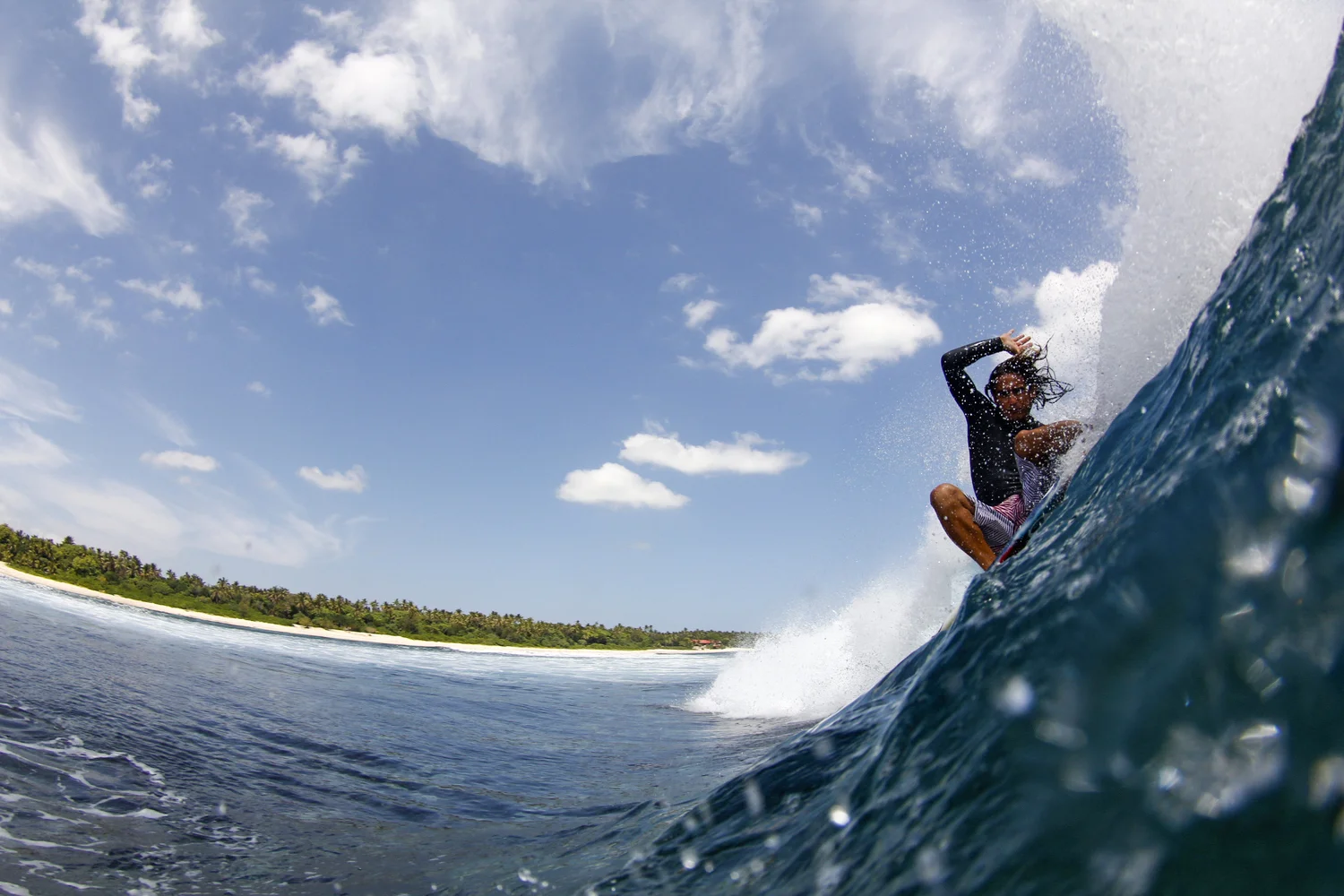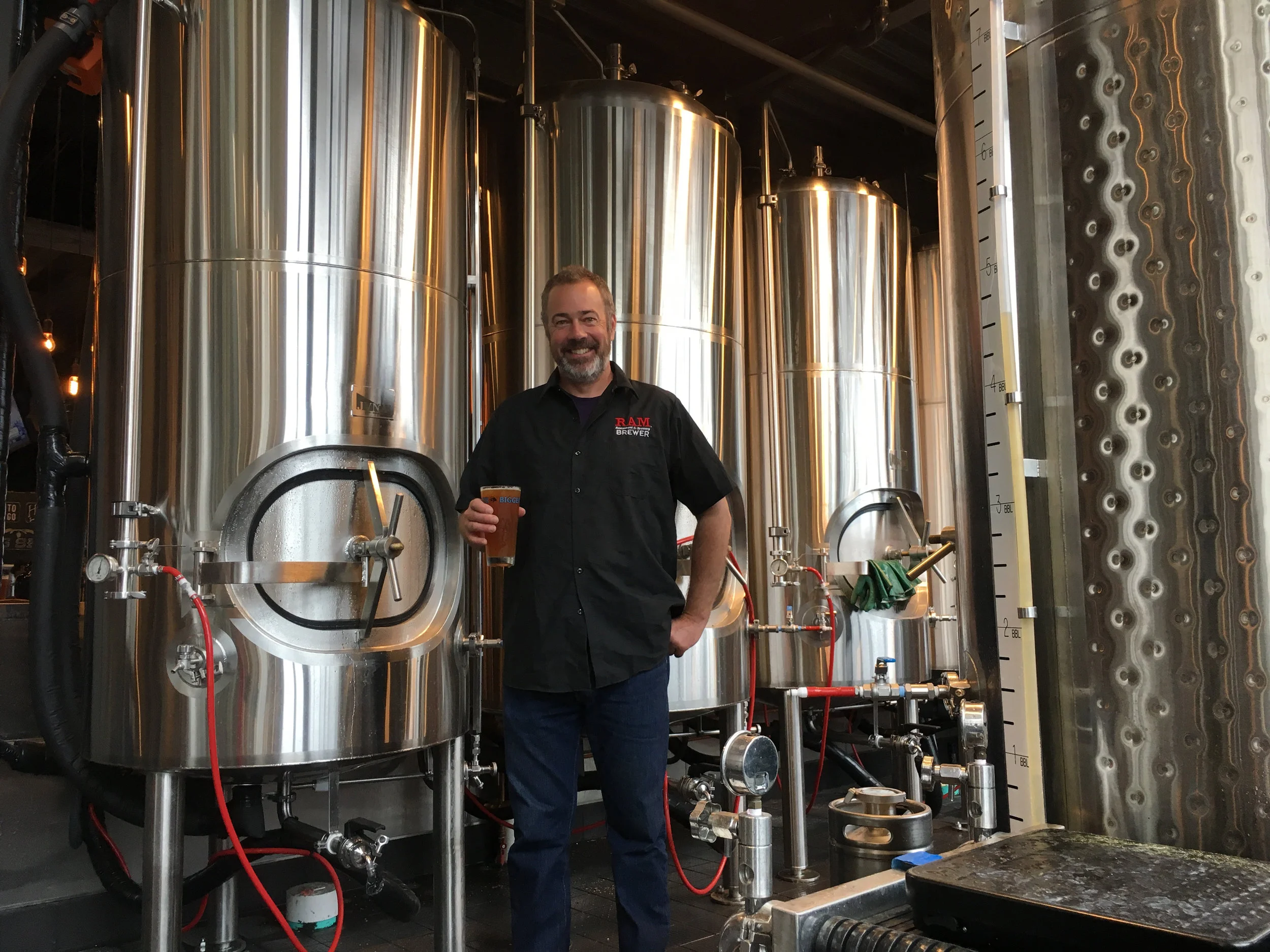Dog Food
By Michael H. Kew
IT'S TOUGH TO LOOK GOOD when a metal pole has been shoved through your ass and out your mouth. You’re roasting clockwise over a pit of coal. You’ve been eviscerated. Your eyeballs have evaporated. Your legs and tail are stiff. Your tongue is out. You seem to be laughing.
You’ve got a red hole in your belly where your organs once were, now wolfed by a big brown dog in a corner of the yard. Your neck has another red hole with boiling blood bubbling from it, trickling around your shiny, pink corpse.
“What kind of meat do you get off of it?” surfer Ryan Burch asks the man turning the pig. “Ham?”
“Yeah, ham."
“Is it nice ham?”
“It’s like pulled pork,” photographer Billy Watts says. “But I can honestly say I’ve never had a pig like this.”
A fat woman in an orange dress sits on dirt near the pig. She’s using aluminum foil to wrap onions and pieces of taro and breadfruit to be set in the umu (earth oven) to be cooked by hot rocks. Tonight we will feast Tongan style to celebrate the first birthday of the daughter of the guy who’s cooking the pig. His wife is the one doing the umu stuff. Neither has a problem with eating the family pet.
“Many more where this came from,” the man says.
“Not sure if I got a pig on a spit when I turned one year old,” surfer Daniel Jones says. But it’s possible since he’s Hawaiian and they do this sort of thing there and throughout Polynesia. I guessed that umu was a far healthier and wholesome alternative to the usual modern Polynesian diet of Pacific Brand corned beef and other imported junk.
But dog is modern fare, too. All meat is fair game — Tongans have been eating Fido for millenia. Back in the day, dog was a delicacy, tastier than pork, and both species were raised domestically. To sweeten their flesh, dogs were fed only vegetables and, in 1774, when Captain James Cook landed in Tonga, he likened the meat to English lamb.
Photo: Kew.
I glance across the yard to the dog chewing pig intestines.
“Are you guys going to eat that mutt?” I ask the pig-roasting man.
“Yeah. But not tonight.”
With his teeth, he removes the cap from a green bottle of beer. Back home I was told that, since Tonga is home to thousands of Mormons, drinking was bad. But this man was Mormon and visibly buzzed whilst swilling from his bottle of Mata Maka, the weak so-called “Tongan” lager that’s only available in Tonga but is brewed in New Zealand, 2,000 kilometers away.
“This beer sucks,” Watts says to me. He’s just finished his second; I’m on my fifth of the afternoon. Watts and I are the drinkers of this trip. Burch and Jones rarely booze.
Mata Maka is also the name of a low hill on Nomuka Island in Tonga’s Ha’apai Group, clamped between Vava’u and Tongatapu, an archipelago my guidebook described as a “sleepy, seductive place.” Nobody really surfs Ha’apai, but I know of at least one excellent left. Nomuka and its surrounding reefs might have good waves, too. So might nearby Mango, Kelefesia, and Tonumeia, green stars on a galaxy of blue. There are dozens more — Ha’apai has many secrets. A boat is required. Viewed from space, the group looks like two big atolls with no western sides, which would be clean and offshore most of the year. Yet another cruelty for surfers since east swells are painfully rare. Our boat is small, so we won’t visit Ha’apai this week.
Starting with Ha’apai, Captain Cook spent three months in Tonga. He commanded the HMS Resolution while his colleague manned the HMS Discovery. When the two ships landed on the isle of Lifuka, a lively food festival was underway. Cook and his men were so gaily greeted that he dubbed Tonga “the Friendly Islands,” a motto still used by the Tonga Visitors Bureau.
Cook didn’t know the warm welcome was actually bullshit and that Lifuka’s opportunistic chiefs planned to kill and eat him and all his men, then loot the two ships. But the nobles couldn’t agree on a plan.
I’m drunk by nightfall. Finally, with equally drunk Tongans, we eat the pig. The white meat is leathery, unchewable. I feed most of mine to the big gut-eating dog under my chair. He’s happy. He’s not on the menu — yet.
Ryan Burch eyes his prey. Photo: Kew.


